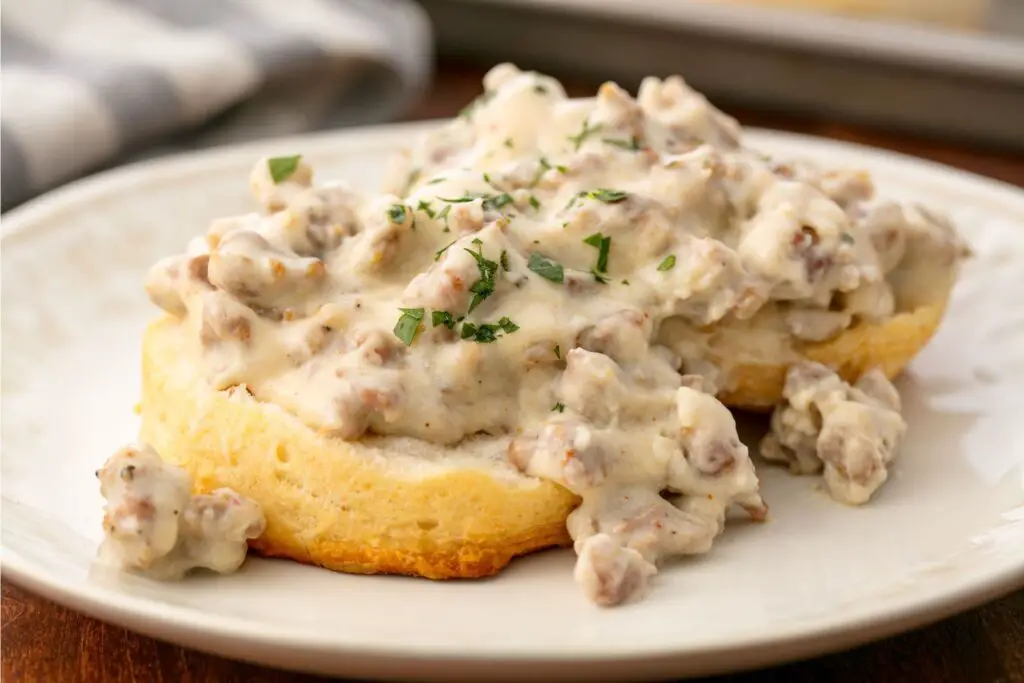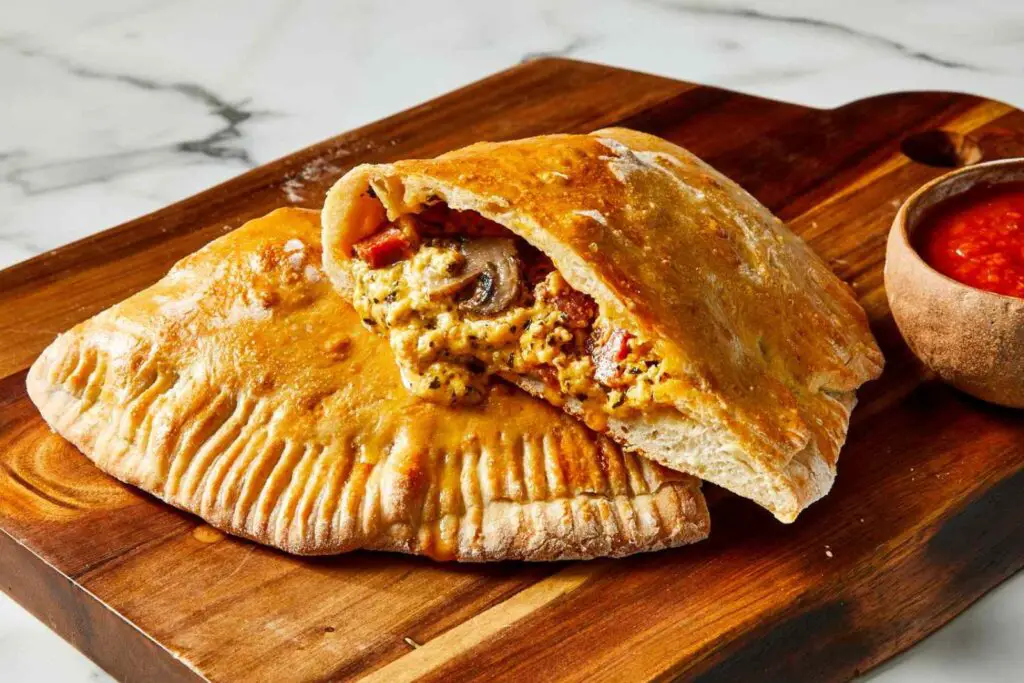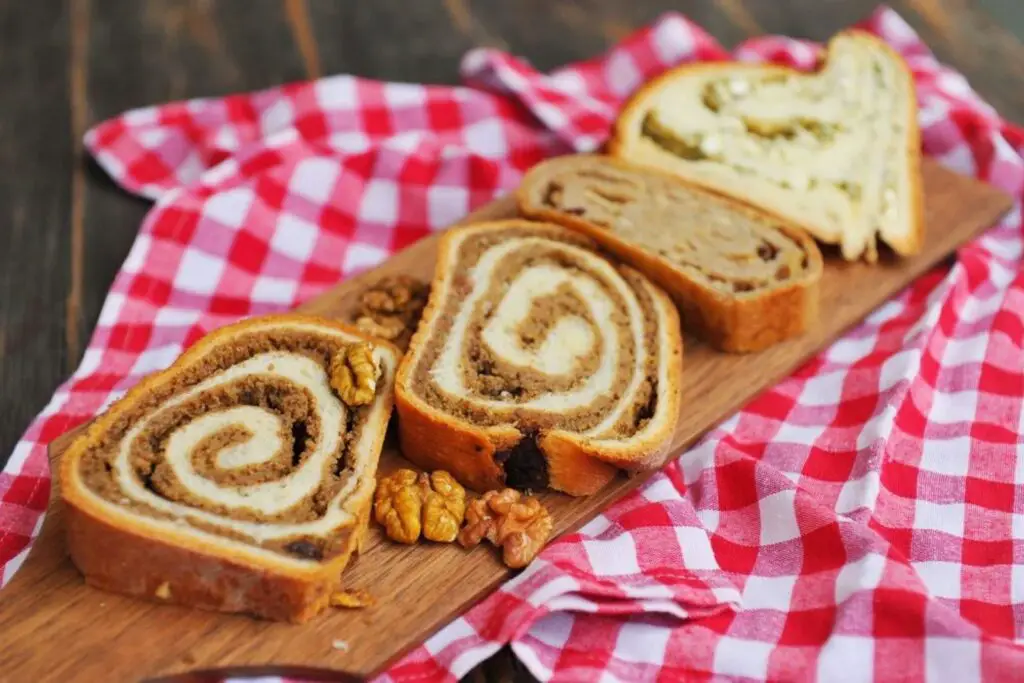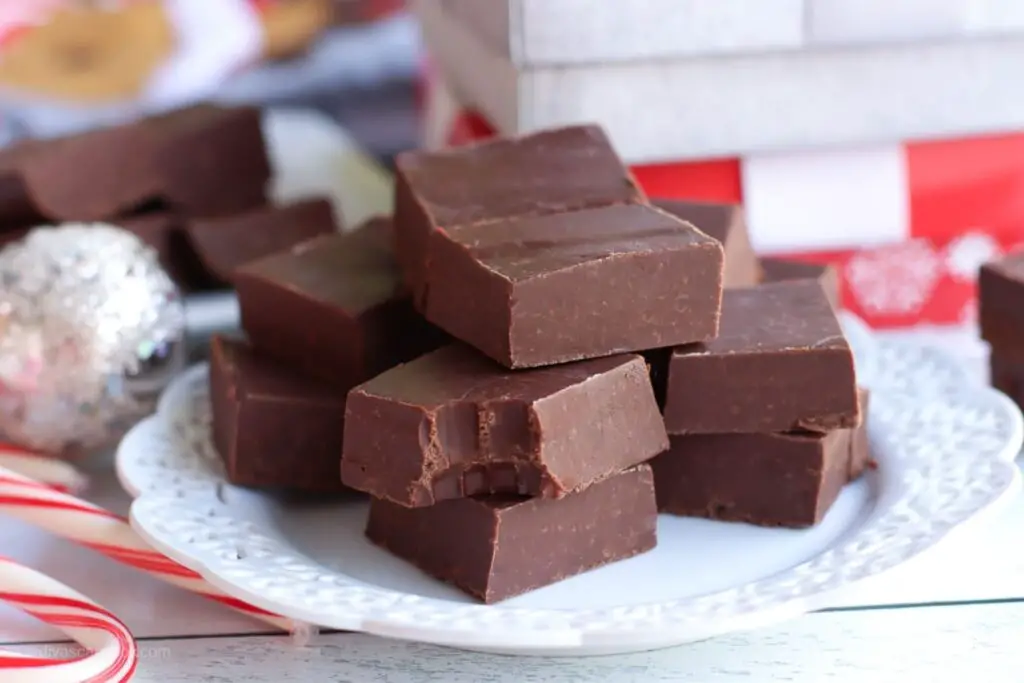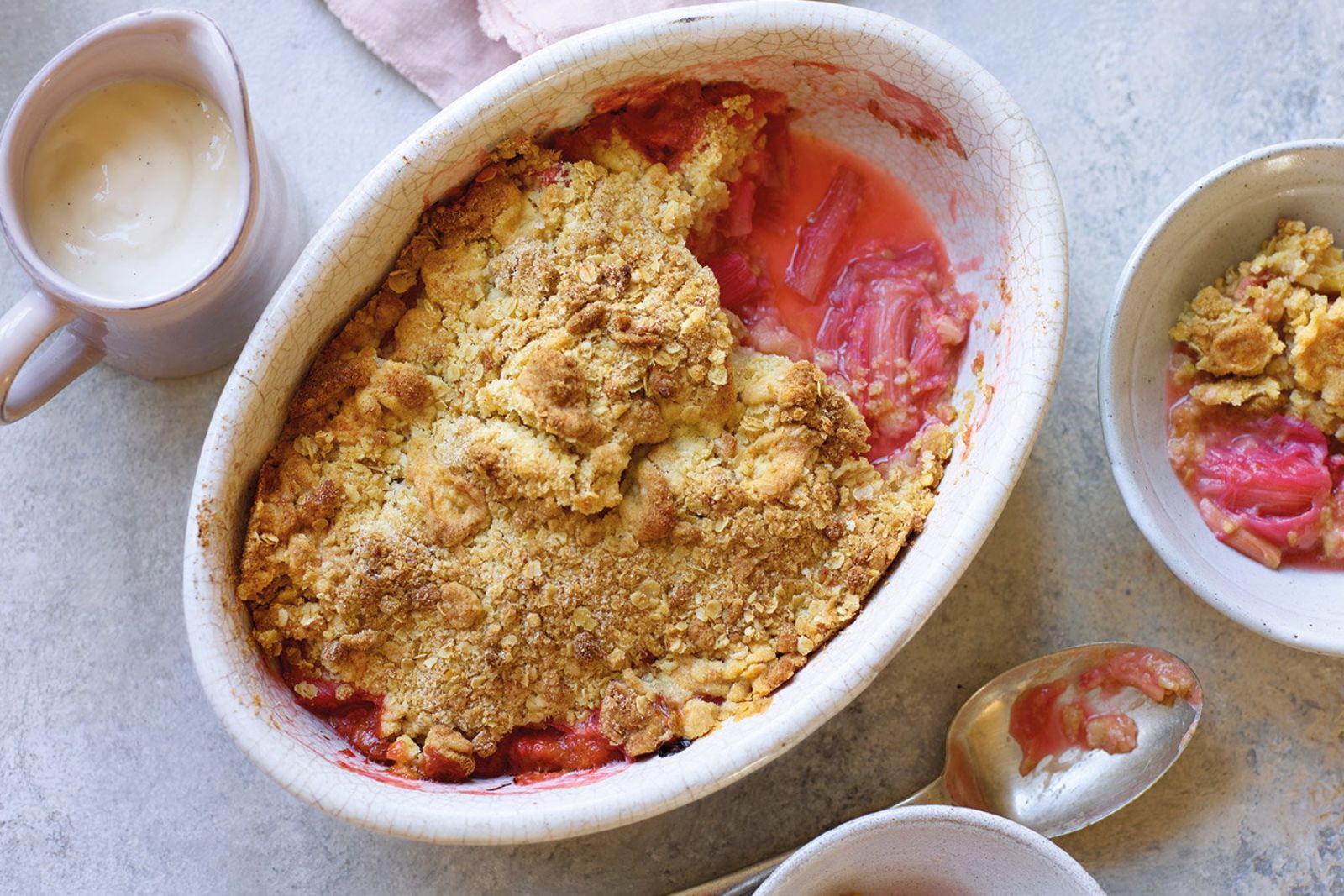
Rhubarb crumble is a classic dessert that combines the tartness of rhubarb with the sweetness of a crumbly topping. It’s a delightful treat that’s perfect for any time of year, but if you find yourself with an abundance of rhubarb crumble or want to prepare it ahead of time, freezing is an excellent option. Freezing rhubarb crumble allows you to enjoy this delectable dessert even when rhubarb is out of season. To help you preserve the flavors and textures of your rhubarb crumble, we’ve put together a step-by-step guide to freezing it properly.
Here’s a comprehensive guide on freezing rhubarb crumble:
Step 1: Prepare Your Rhubarb Crumble
Before you embark on the journey of freezing your delicious rhubarb crumble, it’s crucial to ensure that your dessert is prepared and treated appropriately. This initial step sets the foundation for preserving the quality, taste, and texture of your rhubarb crumble throughout the freezing process.
Why Freshly Baked and Cooling Matters:
- Freshness is key when it comes to freezing any culinary creation, and rhubarb crumble is no exception. When you bake your rhubarb crumble, the ingredients come together harmoniously, forming a delectable symphony of flavors and textures. Allowing your crumble to cool to room temperature after baking is equally vital.
- Preserving Texture: Baked goods, including crumbles, often undergo subtle structural changes during the cooling process. The cooling phase helps the crumble topping to firm up, maintaining its enticing crunchiness. If you were to freeze the crumble while it’s still warm, condensation could occur within the packaging, resulting in a soggy or less appealing texture when thawed.
- Avoiding Temperature Shock: Placing hot or warm crumble directly into the freezer can lead to temperature shock. This phenomenon can cause the formation of ice crystals on the surface of the crumble, which may impact its overall taste and texture. Allowing the crumble to cool to room temperature before freezing mitigates the risk of temperature-related issues.
- Maintaining Flavor Integrity: As your rhubarb crumble cools down, the flavors have a chance to meld and intensify. This is particularly true for desserts like crumbles, where the interplay of sweet and tart is essential. By freezing the crumble after it has cooled, you’re essentially locking in those developed flavors, ensuring that your thawed crumble retains its irresistible taste.
Step 2: Portion the Crumble
After ensuring your rhubarb crumble is freshly baked and properly cooled, the next strategic move in the freezing process is to consider portioning. Dividing your rhubarb crumble into suitable serving sizes is a thoughtful practice that brings convenience and efficiency to your frozen dessert experience.
- Personalization and Flexibility: Portioning your rhubarb crumble allows you to tailor your freezing approach according to your specific needs. Whether you’re freezing individual servings for quick indulgence or larger family-sized portions for shared gatherings, this step ensures that you have the right amount of crumble available when you need it.
- Thawing Made Easy: One of the primary advantages of portioning is the streamlined thawing process. When you freeze the entire batch of crumble together, you’ll need to defrost the whole thing even if you’re craving just a single serving. However, by dividing the crumble into portions, you can selectively thaw only what you intend to consume, minimizing food waste and preserving the quality of the remaining portions.
- Reduced Temperature Fluctuations: The act of opening and closing a container repeatedly to retrieve portions can expose the entire batch of crumble to temperature fluctuations. These fluctuations might lead to uneven thawing and refreezing, potentially affecting the overall texture and taste of the crumble. Portioning eliminates this concern, as you only thaw what you plan to enjoy, keeping the rest of the crumble undisturbed in the freezer.
- Adaptation to Occasions: Depending on the occasion, you can freeze rhubarb crumble in various portion sizes. For solo moments of indulgence, single servings can be stored. On the other hand, if you’re hosting a gathering or a family dinner, larger portions can be frozen, ready to be shared and enjoyed by everyone.
- Maintaining Crumble Integrity: Rhubarb crumble is a delightful interplay of fruit filling and crispy topping. By portioning the crumble, you help maintain the structural integrity of the topping, ensuring that it remains delightfully crunchy even after freezing and thawing.
Step 3: Wrap and Protect
Now that your rhubarb crumble is portioned into the desired sizes, it’s time to give each individual portion the protection it needs before entering the freezer. Wrapping each portion tightly in plastic wrap or aluminum foil might seem like an extra step, but it’s a critical measure to safeguard the quality and taste of your frozen dessert.
- Shielding from Freezer Burn: Freezer burn is the nemesis of frozen foods, including the delectable rhubarb crumble you’ve prepared. It occurs when moisture within the food forms ice crystals on its surface, leading to dehydration and potential loss of flavor and texture. By wrapping each portion of crumble, you create a barrier that minimizes exposure to air and moisture, reducing the risk of freezer burn and maintaining the dessert’s overall quality.
- Preserving Flavor and Aroma: Rhubarb crumble is a harmonious blend of tart rhubarb filling and sweet, buttery topping. These flavors and aromas are precious components that make the dessert truly delightful. Wrapping each portion helps preserve these flavors by preventing the absorption of unwanted odors from the freezer environment. This means that when you eventually thaw and enjoy your crumble, it will still taste as wonderful as the day you baked it.
- Maintaining Texture: The protective layer of plastic wrap or aluminum foil not only guards against freezer burn but also plays a role in maintaining the texture of the crumble topping. It acts as a shield against moisture loss and ice crystal formation, helping to keep the topping crisp and intact. This ensures that your frozen crumble is just as enjoyable to bite into as it was when fresh.
- Custom Fit: Wrapping each portion individually allows you to create a custom fit that tightly encases the crumble. This tailored wrapping further reduces the chances of air exposure, ensuring that your dessert remains in optimal condition during its time in the freezer.
- Easy Thawing: Individual wrapping not only protects the crumble during freezing but also facilitates a smoother thawing process. When you’re ready to enjoy a portion, the wrapping can be easily removed, and the crumble can be thawed without compromising its integrity.
Step 4: Place in Freezer Bags
With your rhubarb crumble portions thoughtfully wrapped and protected, the next crucial step is to transfer them into airtight freezer bags. This additional layer of packaging adds another level of defense against potential threats to the quality and taste of your frozen dessert.
- Creating an Airtight Seal: Airtight freezer bags are designed to keep the contents safe from external elements. When you place your individually wrapped portions of rhubarb crumble into these bags, you’re effectively creating a barrier that minimizes the exposure to air, moisture, and potential contaminants. This seal ensures that the crumble remains in its best possible state during its time in the freezer.
- Preventing Freezer Odors: Freezers are home to a variety of foods, each with its distinct aroma. Without proper protection, your rhubarb crumble could absorb these odors, potentially impacting its flavor profile. By placing the wrapped portions in airtight bags, you’re shielding your dessert from these aromatic invaders, allowing it to retain its original taste and aroma.
- Minimizing Crystallization: Crystallization, caused by the formation of ice crystals within the food, can lead to texture changes and affect the overall quality of your rhubarb crumble. Placing the wrapped portions in freezer bags and expelling as much air as possible before sealing helps reduce the chances of ice crystals forming. This is essential for maintaining the desired texture and consistency of both the filling and the crumble topping.
- Enhanced Freezer Organization: Freezer bags not only protect your rhubarb crumble but also offer a neat and organized way to store your dessert. They prevent any accidental spills or contamination within the freezer, ensuring that your crumble stays intact and doesn’t come into contact with other frozen items.
- Efficient Use of Space: Airtight freezer bags allow for efficient stacking and arrangement within the freezer. This utilization of space is especially handy if you have limited freezer room or if you plan to freeze other items alongside your rhubarb crumble portions.
- Easy Access: Airtight freezer bags are designed for easy sealing and resealing. This means that whenever you’re ready to enjoy a portion of your rhubarb crumble, you can quickly retrieve it from the bag without hassle, and then reseal the remaining portions for continued protection.
Can I freeze rhubarb crumble in glass baking dishes?
It’s generally not recommended to freeze rhubarb crumble in glass baking dishes. Glass can crack due to extreme temperature changes when transitioning from the oven to the freezer. For safe freezing, transfer the crumble into freezer-safe containers or wrap it well before placing it in the freezer.
Is it possible to freeze individual portions of rhubarb crumble in muffin tins?
Yes, you can freeze individual portions of rhubarb crumble in muffin tins. Portion the crumble into the muffin tins, freeze until solid, and then remove the portions and transfer them to airtight freezer bags. This method allows for convenient portioning and thawing when you’re ready to enjoy.
Step 5: Label and Date
As your rhubarb crumble portions find their place in airtight freezer bags, there’s an often overlooked but crucial step that ensures you maintain full control over your frozen dessert collection: labeling and dating. By taking a moment to mark each bag with pertinent information, you’re setting the stage for an organized and efficient freezer experience that maximizes the enjoyment of your crumble.
- Tracking Time: The simple act of labeling and dating each bag provides a clear record of when you placed the rhubarb crumble portions in the freezer. Over time, frozen foods can gradually lose their quality, and flavors might diminish. By noting the freezing date, you’re empowered to manage your crumble inventory and prioritize consumption based on freshness.
- Rotation and Consumption: The “first in, first out” principle is your ally in ensuring that none of your precious rhubarb crumble goes to waste. With clear labels indicating the freezing date, you can easily identify which portions should be enjoyed sooner rather than later. This practice helps you rotate your crumble collection effectively, enjoying the oldest portions first and allowing the newer ones to remain in optimal condition.
- Quality Control: Rhubarb crumble’s allure lies in its delectable interplay of textures and flavors. As time goes on, frozen desserts can experience changes that might affect these qualities. By adhering to proper labeling and dating, you’re able to make informed decisions about the state of your crumble and whether it meets your quality standards for consumption.
- Saves Time and Reduces Guesswork: Imagine having a selection of rhubarb crumble portions, each with a clear label indicating when it was frozen. This eliminates the need to open each bag to determine its age. Instead, you can quickly assess your options and select the portion that best fits your craving or meal plan.
- Planning and Coordination: If you’re someone who enjoys hosting gatherings or planning meals in advance, labeled and dated crumble portions provide a valuable resource. You can anticipate dessert needs, thaw the crumble in advance, and ensure that it’s ready to be enjoyed when the time comes.
- Avoiding Mix-ups: If you happen to have a variety of frozen desserts in your freezer, labeling prevents mix-ups. Confusing one type of dessert for another can lead to unexpected taste experiences – some pleasant, but others potentially not so much.
Step 6: Freeze Flat
As you progress in your journey of freezing rhubarb crumble, the arrangement within your freezer becomes an important consideration. After you’ve meticulously labeled and sealed each portion, the next step is to lay the bags flat in the freezer. This seemingly simple action has a significant impact on both space utilization and the freezing process itself.
- Maximizing Freezer Space: Freezer space is precious real estate, and optimizing it is essential, especially when you have multiple items to freeze. By laying the labeled and sealed bags of rhubarb crumble flat, you’re creating a uniform and compact arrangement that allows you to make the most of every inch of your freezer shelves.
- Efficient Freezing: When you lay the bags flat, you expose a larger surface area of the rhubarb crumble to the cold air within the freezer. This increased surface area enhances the efficiency of the freezing process. The more evenly and quickly your portions freeze, the better they maintain their original texture and taste when eventually thawed.
- Preventing Uneven Freezing: If bags are stacked haphazardly or at odd angles, they might not freeze evenly. This can lead to portions that are frozen on the outside but still slightly soft on the inside. By freezing flat, you reduce the risk of uneven freezing, ensuring that each portion is uniformly frozen and well-preserved.
- Ease of Stacking: Once your crumble portions are frozen solid, stacking becomes a breeze. Flat-frozen portions can be neatly stacked one on top of the other, without the risk of uneven weight distribution or squishing. This orderly arrangement enables you to make the most of vertical space in your freezer.
- Ready for Storage: Stacking frozen crumble portions is not only efficient in terms of space but also convenient when it comes to storage. Neat stacks are easy to manage and retrieve, allowing you to access the desired portion without disturbing the others.
- Uniform Thawing: When the time comes to enjoy a portion of your rhubarb crumble, you can effortlessly remove a stack from the freezer. Because the portions were frozen flat and stacked evenly, they’ll thaw more uniformly, ensuring that the entire portion reaches the desired temperature and consistency at the same rate.
How long can I store frozen rhubarb crumble?
Properly stored, frozen rhubarb crumble can maintain quality for 2-3 months. Beyond this period, it might experience some degradation in taste and texture. Label and date each portion for better tracking and rotation to ensure optimal enjoyment.
What’s the recommended temperature for freezing rhubarb crumble?
The recommended temperature for freezing rhubarb crumble is 0°F (-18°C) or lower. This temperature ensures safe storage and helps maintain the quality of the crumble during the freezing process.
Step 7: Thaw and Reheat
As the time arrives for you to relish the fruits of your freezing efforts, it’s essential to understand the art of thawing and reheating your frozen rhubarb crumble. This step ensures that your dessert emerges from the freezer with its flavors and textures revitalized, ready to delight your taste buds once again.
- Thawing in the Refrigerator: The journey from freezer to plate begins with careful thawing. Instead of exposing your rhubarb crumble to sudden temperature changes, opt for a gentle approach by transferring the desired portion from the freezer to the refrigerator. Thawing in the refrigerator maintains the delicate balance of textures and flavors that make your crumble irresistible. Slow, controlled thawing helps prevent moisture loss and preserves the overall integrity of the dessert.
- Avoiding Temperature Shock: Sudden temperature changes can be detrimental to the texture of frozen desserts. Thawing in the refrigerator minimizes the risk of temperature shock, which could lead to condensation forming on the surface of the crumble. This is particularly crucial for maintaining the crispiness of the crumble topping.
- Planning Ahead: Keep in mind that thawing in the refrigerator requires some foresight. If you’re craving a portion of your rhubarb crumble, it’s wise to plan ahead and transfer it from the freezer to the refrigerator well in advance. This ensures that your dessert is ready to be enjoyed when you are.
- Restoring Crispiness: While thawing restores the crumble’s delightful flavors, reheating is the key to reviving its signature crispiness. A low-temperature oven is your ally in this endeavor. Gently reheating your thawed crumble in the oven at a low temperature helps rejuvenate the crumble topping, bringing back its initial crunch and ensuring that each bite is as satisfying as the first.
- Savoring the Experience: Thawing and reheating are not only practical steps but also part of the experience of enjoying your rhubarb crumble. The anticipation that builds while waiting for your dessert to thaw and the aroma that fills the air as it reheats contribute to the overall pleasure of the dining experience.
- Texture and Flavor Conservation: By thawing and reheating your crumble correctly, you’re showing your dedication to maintaining the dessert’s quality. You’re ensuring that the delicate balance of tart rhubarb filling and buttery crumble topping remains intact, delivering a satisfying texture and harmonious flavor profile.
What’s the best way to thaw frozen rhubarb crumble quickly?
For quicker thawing of frozen rhubarb crumble, place the wrapped crumble in a sealed plastic bag and immerse it in cold water. This method helps maintain texture better than thawing at room temperature. Avoid using hot water or the microwave to prevent uneven thawing or loss of quality.
Other related questions
Can I refreeze rhubarb crumble?
Refreezing rhubarb crumble is generally discouraged due to potential quality loss. Thawing and refreezing can affect texture and flavor. It’s best to consume crumble after initial freezing for optimal enjoyment.
How do I know if the rhubarb crumble has gone bad after being frozen?
Signs of frozen rhubarb crumble going bad include off smells, freezer burn appearance, and texture changes. Unpleasant odors or flavors indicate spoilage. Ice crystals or dried-out areas suggest freezer burn. Soggy or mushy texture could mean deterioration. Always trust your senses and discard if doubt arises.
Can I freeze rhubarb crumble with ice cream on top?
It’s not recommended to freeze rhubarb crumble with ice cream on top. Freezing ice cream can lead to texture changes and ice crystal formation. It’s better to freeze the crumble and add the ice cream when serving for optimal quality.
Can I freeze rhubarb crumble made with gluten-free or vegan ingredients?
Absolutely! You can freeze rhubarb crumble made with gluten-free or vegan ingredients. The freezing process works well for all types of rhubarb crumble, including those made to accommodate dietary preferences. Just ensure proper wrapping and follow freezing guidelines for best results.
Can I freeze rhubarb crumble made with artificial sweeteners or reduced sugar?
Yes, you can freeze rhubarb crumble made with alternative sweeteners or less sugar. Freezing doesn’t significantly impact the texture or taste of the crumble, regardless of the sweetener used.

